.png)
How CLM Data Will Fuel Predictive Corporate Governance
For many years, corporate governance has been seen mainly as a framework for oversight, compliance, and structured control. Today, governance is evolving from a reactive supervisory function into a predictive, forward-looking discipline. The leadership teams aren't asking anymore whether the obligations are being met but whether the organization is set up to anticipate risks, grasp opportunities early, and ensure every contractual relationship delivers measurable value.
This shift is driven by increasing volume, complexity, and strategic importance of contracts. In every industry, contracts define revenue, supply chain continuity, service obligations, vendor accountability, pricing, intellectual property protections, and performance standards. When such agreements are managed on shared drives, spreadsheets, and email chains, visibility is lost, unnecessary delays are experienced, and operations have limited control. Governance becomes after-the-fact oversight rather than real-time strategic direction.
Contract lifecycle management systems change this dynamic. They turn contracts from static documents into active data assets. When captured, structured, and analyzed the right way, contract data becomes an intelligence source driving predictive governance and informed decision-making at every level of the enterprise.
From Contract Storage to Contract Intelligence
Traditionally, contract management was really about the documentation and storage of that documentation. Once signed, contracts were simply filed away, accessed only when a dispute occurred or a renewal approached. But.webp?width=300&height=300&name=Untitled%20design%20(25).webp) modern contract management encompasses a lot more than just archiving. It really involves the ongoing ability to locate, interpret, compare, and analyze the information contained within contracts on a scale.
modern contract management encompasses a lot more than just archiving. It really involves the ongoing ability to locate, interpret, compare, and analyze the information contained within contracts on a scale.
It is in this aspect that the role of contract data management becomes relevant. To begin with, contract data management spans the entire gamut of terms and obligations of the contract, milestones, financial information, and performance indicators. Instead of documents scattered across inboxes; organizations maintain a centralized contract repository where data is standardized and easily searchable.
Decision-makers, with accessible and transparent information about the contract, can quickly act with precision. Executives can verify multiyear vendor performance to confirm whether pricing structures remain competitive; identify contractual risks early; confirm that compliance responsibilities are being met unambiguously; and Governance can become an organic output of operational clarity, instead of being a separate administrative burden when data in a contract is intelligently structured.
Why Tracking Contract Data Matters for Governance
The core objective of governance is accountability, transparency, and value realization. None of these are possible without accurate and well-managed contract data. Contractual agreements define commitments between organizations and partners. If these commitments are unclear or untracked, there is no reliable foundation for oversight.
Tracking contract data ensures that the organization always knows:
- What obligations it must fulfill
- What obligations partners must fulfill
- What risks are embedded within agreements
- When renewals, reviews, or renegotiations are due
This clarity helps avoid unnecessary failures, whether that comes in the form of missed renewal dates, unsigned penalty clauses, omitted deliverables, or financial disputes. When leadership has visibility into these components, governance moves from monitoring compliance to guiding business strategy.
This visibility also contributes to better external relationships: all stakeholders, vendors, clients, and even regulatory authorities develop confidence when organizations show consistency and reliability in fulfilling their contractual commitments. Once trust is established in governance, it becomes a competitive differentiator.
The Data Types That Matter Most
While there are large amounts of information contained within contracts, the ones most important for governance include key dates, obligations, risk clauses, and financial terms. These are the dimensions that determine operational continuity and financial impact.
Key dates ensure timely decision-making.
Obligations define accountability.
Risk clauses outline exposure and protection mechanisms.
Financial terms determine revenue realization or cost control.
If all of these elements are documented appropriately, consistently tracked, and contextualized for analysis, organizations will be empowered to manage contract performance proactively rather than reactively. It is at this stage that governance matures from the control of risk into the shaping of strategic advantage.
The Role of Automation in Establishing Governance Discipline
The manual tracking of contracts creates inconsistency, administrative burden, and human error. Not even the most seasoned legal or procurement teams can maintain real-time visibility when data resides in handwritten(1).webp?width=300&height=300&name=Untitled%20design%20(43)(1).webp) notes, personal task reminders, or siloed spreadsheets. With increased contract volume, it is impossible to maintain manual oversight.
notes, personal task reminders, or siloed spreadsheets. With increased contract volume, it is impossible to maintain manual oversight.
Automation changes this entirely. A Contract Lifecycle Management system automates:
- Data extraction from agreements
- Obligation tracking and reminders
- Renewal alerts and milestone notifications
- Workflows for review and approval
- Visibility dashboards for leadership review
When the automation ensures accuracy, teams leverage structured insights to minimize risk, negotiate improvements, and enhance performance accountability rather than wasting time searching for information or reconciling conflicting records.
Automation does not replace expertise; it amplifies the effectiveness of legal, finance, procurement, and compliance functions.
Bridging Departments: How CLM Data Unifies Legal, Finance, Procurement, and Operations
It is never the sole responsibility of just one team to perform on a contract. Legal might author the terms, but procurement is responsible for the relationship with the supplier, finance for payment and revenue recognition, operations for the execution of the service, and compliance for regulatory alignment. Working in silos means that the outcomes of contracts become variable and fragmented. The nuances of the contractual language are interpreted through the priorities of each group in their silos, resulting in uncertainty over responsibilities, duplicated work efforts, or delays.
Fragmentation doesn't equate to the lack of skill; it means lack of shared visibility.
CLM data does away with this fragmentation, offering a single source of truth. Each department accesses the same contract information, version, commitments, and timelines. Rather than operating from assumptions or informal, word-of-mouth agreements, teams operate from validated data. Finance knows where and when pricing escalations take hold, for example. Operations know when service level requirements change. Compliance is aware of when a certification is required. Leadership gets visibility without asking for status reports. The organization acts on clarity, not interpretation.
Mutual visibility inspires a cultural shift from transactional contract handling to collaborative contract stewardship. Teams start imagining contracts not as stand-alone documents but as ongoing business commitments that require shared accountability. As the contract data unites departments, governance automatically becomes fluid, participatory, and informed. It is this cross-functional clarity that allows predictive governance to take root.
From Governance Frameworks to Predictive Control
Traditional governance frameworks often emphasize standardization and documentation, but today's governance demands anticipation-it demands that organizations see patterns, detect early warning signals, and identify.webp?width=300&height=300&name=Untitled%20design%20(53).webp) contractual risks long before those factors influence financial or operational outcomes. This is where the data in CLM gets predictive. Patterns in contract execution begin to show supplier weaknesses, recurring negotiation challenges, compliance blind spots, and emerging opportunities. By analyzing the contract data over time, across regions, business units, and vendors, an organization starts to understand not just what's happening but also what's likely to happen.
contractual risks long before those factors influence financial or operational outcomes. This is where the data in CLM gets predictive. Patterns in contract execution begin to show supplier weaknesses, recurring negotiation challenges, compliance blind spots, and emerging opportunities. By analyzing the contract data over time, across regions, business units, and vendors, an organization starts to understand not just what's happening but also what's likely to happen.
Predictive governance turns:
- Missed renewals into planned renegotiations
- Compliance risks into ongoing oversight
- Contract disputes into performance management
- Supplier uncertainty into strategic vendor development
Organizations move from reacting to business events to shaping them.
Corporate Leadership Needs This Visibility
Executive teams today operate in an environment of increasing regulation, complex supply chains, and global competition. Decisions must be informed, swift, and based on reliable data rather than assumptions. CLM data provides this foundation.
With centralized and analyzed contract intelligence, leadership gains:
- Confidence in compliance posture
- Visibility into vendor and partner performance
- Insight into cost drivers and revenue structures
- Early detection of emerging risks
- Control over value realization
These are not operational benefits. They are strategic capabilities.
How Predictive Governance Becomes a Competitive Advantage
With CLM data, organizations that have adapted to predictive governance see significant improvement in cost control, risk mitigation, operational efficiency, and strategic planning. They achieve better negotiations because of a clear view into historical performance. They lower the instances of disputes due to obligation tracking. They avoid revenue leakage because financial terms are consistently tracked. They pass audits with confidence because compliance is proven through structured evidence.
Meanwhile, the organizations that do not have any visibility of contracts have to remain dependent on reactive fixes, individual memories, and manual checks against the records. This inconsistency introduces cost, uncertainty, and reputational vulnerability.
What differentiates these two models is not the quality of legal expertise or business strategy. The difference is data intelligence.
Conclusion
The practice of corporate governance now enters a new phase. It is no longer solely defined by oversight, reporting, or policy enforcement; it's turning into a forward-looking discipline based on real-time data, insight into performance, and proactive decision-making.
Contracts are no longer static legal documents but have turned into dynamic sources of operational and strategic intelligence. This data, when captured, structured, and analyzed through a Contract Lifecycle Management system, provides visibility that was previously unattainable. They go beyond monitoring compliance to the shaping of outcomes, reduce risk not after it has materialized but before it becomes a threat, and turn contract value into measurable performance, not unrealized potential.
This is not a theoretical transformation; it's one already taking shape in global competition. The organizations that lead with contract intelligence will operate in clarity, agility, and strategic discipline, while for those that don't, fragmentation of data, constrained decision-making, and preventable risk exposure will continue.
Governance will become predictive, data-driven, and integrated into daily decision-making in the future. And the foundation of that future is CLM data.
Transform Contract Data into Strategic Advantage with Dock 365,
DOCK 365 provides a secure, Microsoft-integrated CLM platform for centralizing contract data, workflow automation, and ensuring predictive governance across your organization.
If your teams are still relying on spreadsheets, email chains, and shared folders for managing contracts, it's time to evolve. Strengthen governance.
Improve compliance. Increase control. Maximize contract value.
Schedule a free demo with Dock 365 and lead with data-driven governance.
Book a Live demo
Schedule a live demo of Dock 365's Contract Management Software instantly.
.jpg?width=1260&height=1205&name=Image%20(2).jpg)
Written by Fathima Henna M P
As a creative content writer, Fathima Henna crafts content that speaks, connects, and converts. She is a storyteller for brands, turning ideas into words that spark connection and inspire action. With a strong educational foundation in English Language and Literature and years of experience riding the wave of evolving marketing trends, she is interested in creating content for SaaS and IT platforms.


